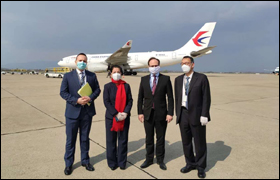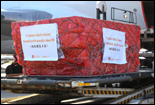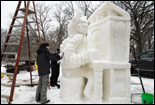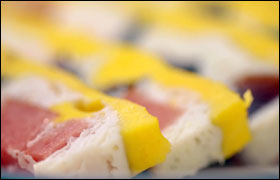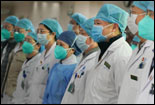Što je kineska vlada učinila za razvoj gospodarstva za vrijeme rata otpora?

Foto: Arhiva
Soon after Japan's full-scale war of aggression against China began, Shanghai and the other coastal areas, where most of the industry was concentrated, fell one after another into enemy hands. This brought enormous losses to an economy that was still underdeveloped and unbalanced. Further adding to the problem was the soaring cost of waging war, so that the economic burden on the areas away from the frontline was growing heavier and there were widespread shortages in military supplies and civilian goods around the country.
In order to adapt to the needs of war, the National Government adopted economic emergency measures. It first established a military economic agency, exercised monetary and foreign exchange control, encouraged and assisted coastal factories to relocate to inland areas, and developed the economy in the Great Rear Area – the KMT-controlled areas in southwest and northwest China. It then went on to institute a wartime system, exercising comprehensive control of operations across the economy, and making adjustments to economic policies and principles.
In its Program of Resistance and National Reconstruction, the KMT emphasized that military needs should be central to economic development while at the same time attention should be given to improving the people's living standards and expanding wartime production. The wartime economic policy was thus centered on giving priority to military affairs and putting into effect a planned economy. This meant that the planned economy was fundamental to China's economic policy during the war, and monetary, foreign exchange, and import and export control was to be exercised. In January 1939, the KMT decided to practice a controlled economy to adjust production and consumption, and in March 1941, it officially confirmed implementation of a controlled economy. The aim was to rely on legal and administrative means to strengthen direct interference or control of the wartime economy.
At the same time, the government also made major adjustments to its departments responsible for the economy and the offices underneath them, which, on the whole, succeeded in turning around what had been a somewhat chaotic situation and creating the necessary conditions for implementing the wartime economic policy.
In November 1937, the National Government decided to move its capital to Chongqing and develop a framework of centers away from the frontlines in southwest and northwest China, attaching particular weight to those in the southwest. In the Plan for Developing Southwest and Northwest China drawn up in January 1938, the National Government made it clear that new industrial centers would be mainly located in Sichuan, Yunnan, Guizhou, and the western part of Hunan. New areas for industrial development were also designated in the plan.
Under a government organized and supported initiative, a number of important factories and other enterprises in eastern coastal areas began moving inland. By the end of 1938, 304 factories, including machines and equipment weighing in at over 50,000 metric tons, had been relocated to the Great Rear Area.
The National Government's initiative to develop an economy suitable to wartime conditions had an impact on different aspects of China's social and economic development. As the wartime economy focused on the development of the manufacturing and mining industries, and gave particular precedence to heavy industries, which had been amongst the weakest in China before the changes and enjoyed extraordinary growth during this period. At the same time as the heavy industries were being bolstered, a number of emerging industries were also established in the interior, thus giving impetus to the development of modern industry. The relocation of large numbers of manufacturing and mining enterprises from along the coast and the Yangtze River to the Great Rear Area sped up economic development in southwest and northwest China – areas which had been industrially backward before the relocation initiative. The move generated important economic support for the resistance against Japanese aggression.
· Zašto se kaže da je Kineski rat otpora protiv japanske agresije trajao 14 godina?
· Zašto je rat otpora nacionalna prekretnica od pada na novi ciklus?
· Zašto je KPK bila uporište kineskog ujedinjenog otpora?
· Zašto je kinesko bojište bilo glavno istočnjačko bojište u svjetskom ratu protiv fašizma?
· Koji je incident obilježio početak rata protiv otpora?
· Kako je osnovana marionetska država Mandžukuo?
· Što je obilježilo početak kineskog nacionalnog otpora?
· Kako je KPK upravljala ratom otpora?
· Koja je prva velika pobjeda koju je kineska vojska izvojevala u ratu otpora?
· Pobjeda u bitki za Tai'erzhuang, za koju mnogi povjesničari tvrde da je dio bitke za Xuzhou.
· Što se događalo s kineskom diplomacijom nakon početka narodnog rata otpora?
· Kako su Kinezi u domovini sudjelovali i podržavali rat otpora?
· Kako su Kinezi izvan domovine pomagali u kineskom ratu otpora?
· Kako je ostatak svijeta podržao kineski rat otpora?
· Koje su nove taktike razvijene u kineskom gerilskom ratovanju protiv japanske agresije?
· Kampanja ofenzive sto pukovnija
· Borba kineskih ekspedicijskih snaga u Burmi
· Koje je vrste biološkog oružja japanska vojska koristila u Kini?
· Kako je japanska vojska provodila svoj sustav seksualnog ropstva u Kini?
· Kako je Kina sudjelovanja u osnivanju Ujedinjenih naroda?
· KPK je pokrenula prvu stratešku protuofenzivu na kineskom bojištu
· Proslava japanske predaje i prihvaćanja u Kini
· Narodni tajvanski otpor protiv Japanaca i oporavak Tajvana
· Kako se sudilo japanskim ratnim zločinima?








